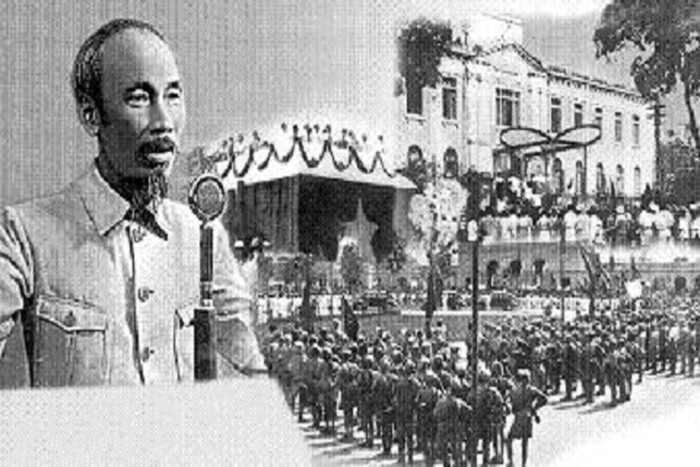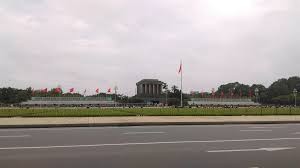(VOVWORLD) - Ba Dinh square, where President Ho Chi Minh read the Declaration of Independence for Vietnam on September 2, 1945, is the largest square in Vietnam. It is part of the Ba Dinh historical-cultural complex, which includes the sacred Ho Chi Minh Mausoleum. Ba Dinh square, at the heart of the capital Hanoi, inspires patriotism and national pride.
Pride is an emotion every Vietnamese person feels when they come to Ba Dinh square. In the early autumn days of September, people from all across Vietnam gather at Ba Dinh square to celebrate Vietnam National Day.
Nguyen Bich Hanh of Dong Nai province said, “This is the first time I’ve visited Ba Dinh square to celebrate National Day. I came here at 6am to attend the flag-raising ceremony. I felt touched and proud. This sacred moment turned me speechless.”
|
 President Ho Chi Minh read the Declaration of Independence for Vietnam on September 2, 1945. President Ho Chi Minh read the Declaration of Independence for Vietnam on September 2, 1945.
(Photo: tuyengiao.vn)
|
Ba Dinh square is a historical relic and iconic landmark of Hanoi. 75 years ago, on September 2, President Ho Chi Minh read Vietnam’s Declaration of Independence to half a million people, establishing the Democratic Republic of Vietnam, now the Socialist Republic of Vietnam.
Ba Dinh square is 320 meters long and 100 meters wide and is divided by 1.4-meter-wide paths into 210 grassy squares. At the center of the square stands a 25-meter flag pole flying Vietnam’s national flag, which features a yellow star on a red background.
Ba Dinh square was once part of the Thang Long imperial citadel. After the French conquered Indochina in 1894, they built the administrative center of the Indochinese Federation in the area around the square. A flower garden named the Pugininer garden was built at the center of the area.
 Ba Dinh square (Photo: vi.wikipedia.org) Ba Dinh square (Photo: vi.wikipedia.org) |
After Japan overthrew France and proclaimed independence for Vietnam, Hanoi Mayor Tran Van Lai decided to rename the Pugininer garden. He chose the name Ba Dinh garden to commemorate a late 19th century uprising against the French colonialists in the Ba Dinh area of Nga Son district, Thanh Hoa province.
Ba Dinh square had several other previous names as historian Le Van Lan put it, “As this was where President Ho Chi Minh read Vietnam’s Declaration of Independence, Ba Dinh garden was renamed Independence garden in December 1945. It was named Hong Bang garden when French rule returned, but on October 10, 1954, when Hanoi was liberated for good, the municipal People’s Committee pronounced it Ba Dinh garden again, and then Ba Dinh square. The Ho Chi Minh mausoleum was built here and inaugurated on September 2, 1975.
Do Chien Thang of Hanoi told VOV, “I’m excited every time I visit the Ho Chi Minh mausoleum. I’m old now but I’m still as emotional as I was when I came here for the first time.”
Next to Ba Dinh square stand the French Governor’s residence, the Presidential Palace, the Ba Dinh Grand Hall, and the National Assembly Building. This beautiful and historic architectural complex lives in the hearts of Vietnamese people now and forever.